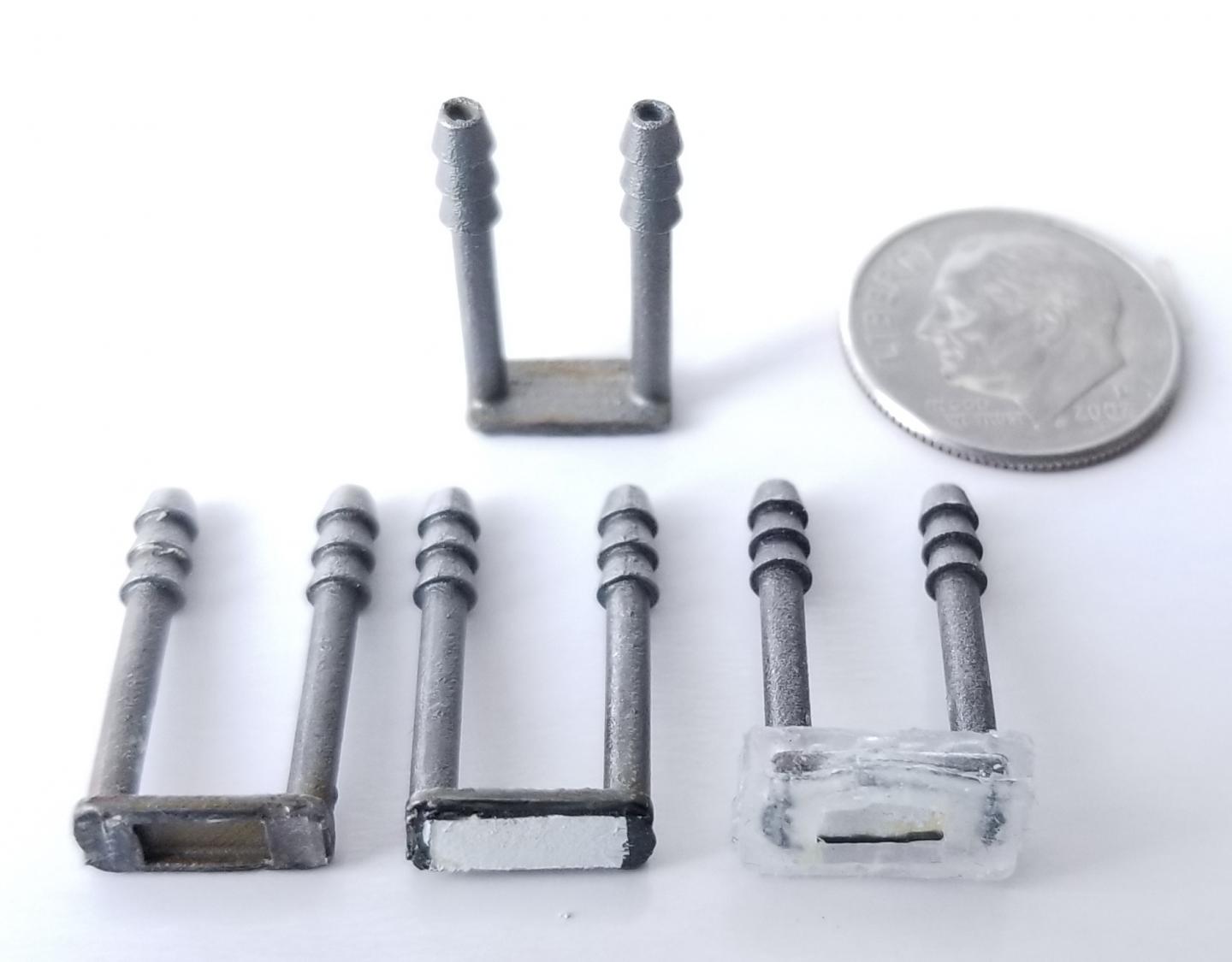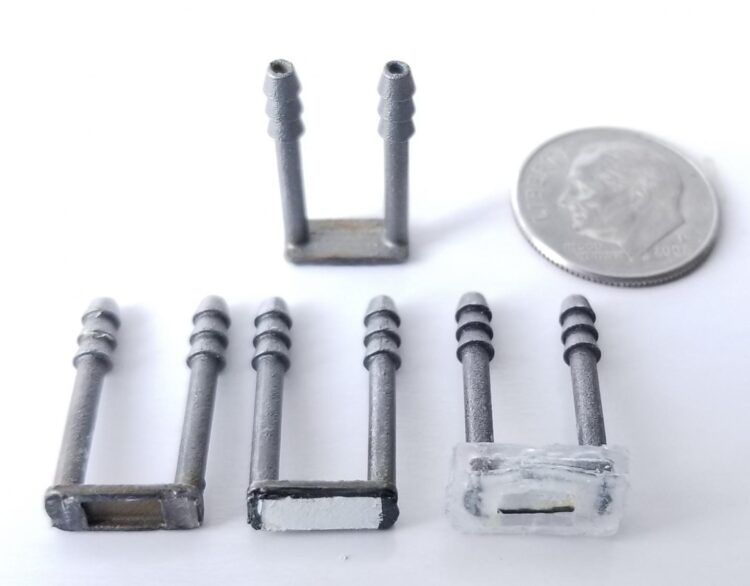Osmotic therapy device reduces swelling to prevent secondary injuries in rats

Credit: Victor Rodgers/UC Riverside
When injured, the spinal cord swells, restricting blood flow, resulting in further, often critical and permanent motor, sensory, and autonomic function damage. Rapid prevention of spinal cord swelling immediately after injury is key to preventing more serious damage. The only treatment to date has been steroid therapy with methylprednisolone, which is minimally effective.
Now, in an open-access paper published in Frontiers in Bioengineering and Biotechnology, a group led by Marlan and Rosemary Bourns College of Engineering Jacques S. Yeager, Sr. Professor of Bioengineering Victor G. J. Rodgers and UCR School of Medicine biomedical sciences professor Devin Binder describes an osmotic therapy device that gently removes fluid from the spinal cord to reduce swelling in injured rats with good results. The device can eventually be scaled up for testing in humans.
The device consists of a tangential flow module supporting a semipermeable membrane connected to a hydrogel that rests on the exposed spinal cord. Artificial cerebrospinal fluid containing the protein albumin to initiate osmosis passes across the device side of the membrane, transporting water molecules from the spinal cord. Both fluids drain into a small chamber and cycle again through the device to remove more water. The amount of water removed is small compared to the amount of osmolyte, allowing for recirculation.
The authors have found in previous studies that relatively small increases in the percent of water content can cause significant swelling in the brain. These experiments showed that the osmotic therapy device removed enough water to prevent brain swelling and was capable of removing even more. They also found that removing the excess water quickly enough in brain swelling improved neurological outcomes. This is a key hope for the spinal cord device as well.
The team plans to continue improving the device through longer experiments on rats before eventually moving on to human trials.
Together with biomedical sciences professor Byron Ford, Rodgers is developing a similar device that drains fluid directly from the brain and introduces neuregulin-1, a molecule produced naturally by the body to regulate communication between cells in the brain and heart and promote their growth, to improve treatment and reduce damage of severe strokes.
###
The paper, “Implantable osmotic transport device can reduce edema after severe contusion spinal cord injury,” is co-authored by Christopher Hale, Jennifer Yonan, Ramsey Batarseh, Roman Chaar, Carrie R. Jonak, and Shaokui Ge, also at UC Riverside.
Media Contact
Holly Ober
[email protected]
Original Source
https:/
Related Journal Article
http://dx.





